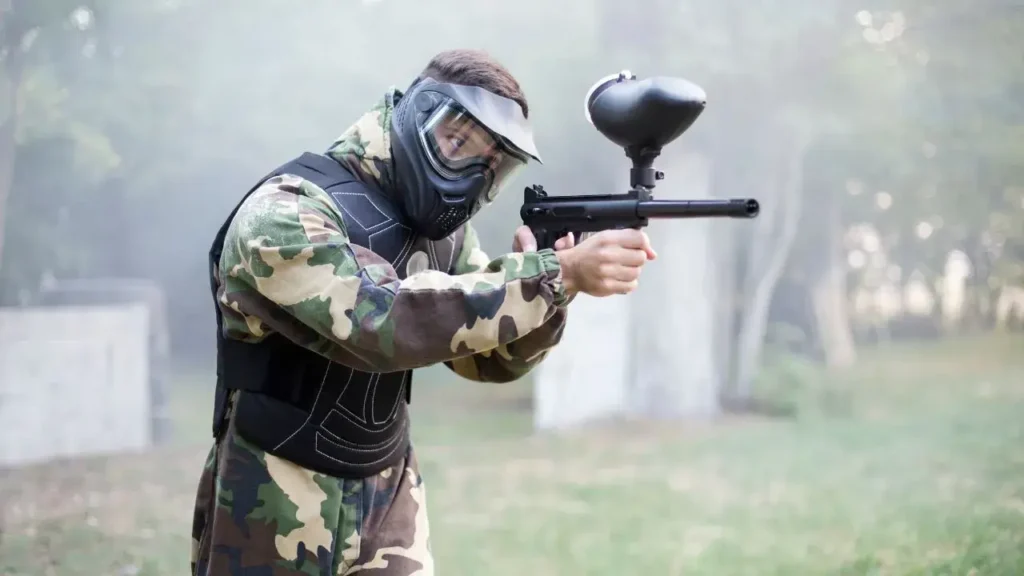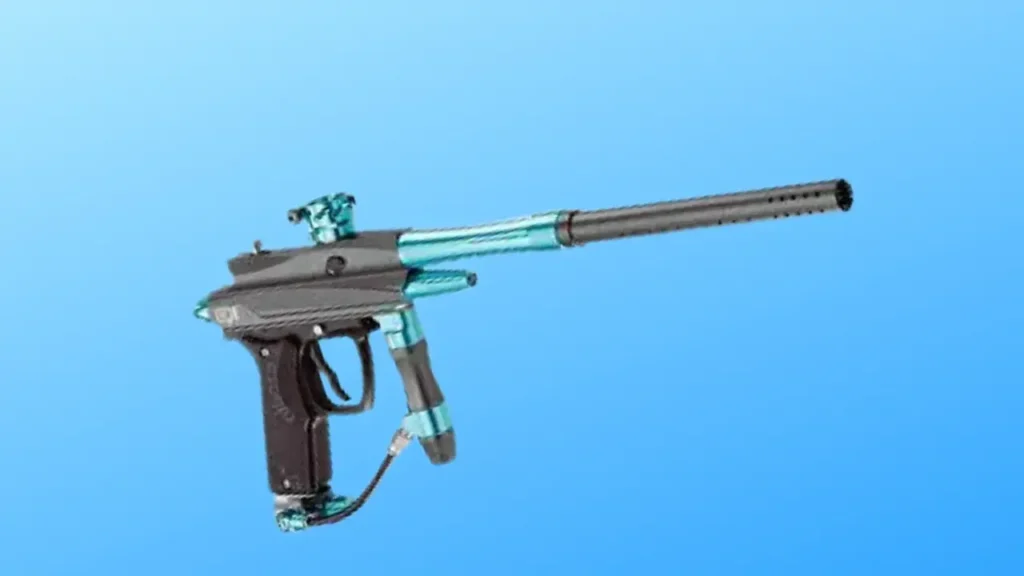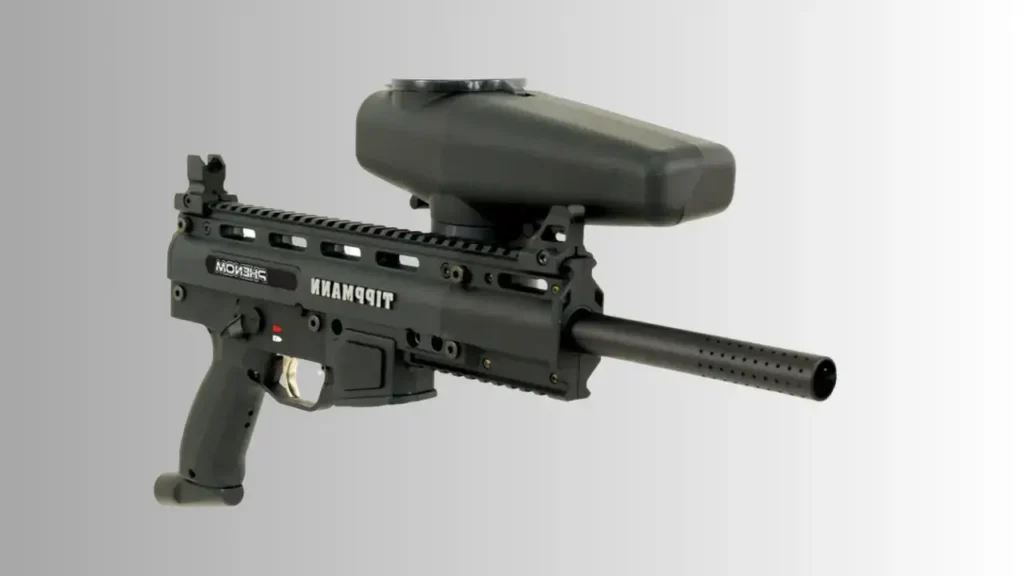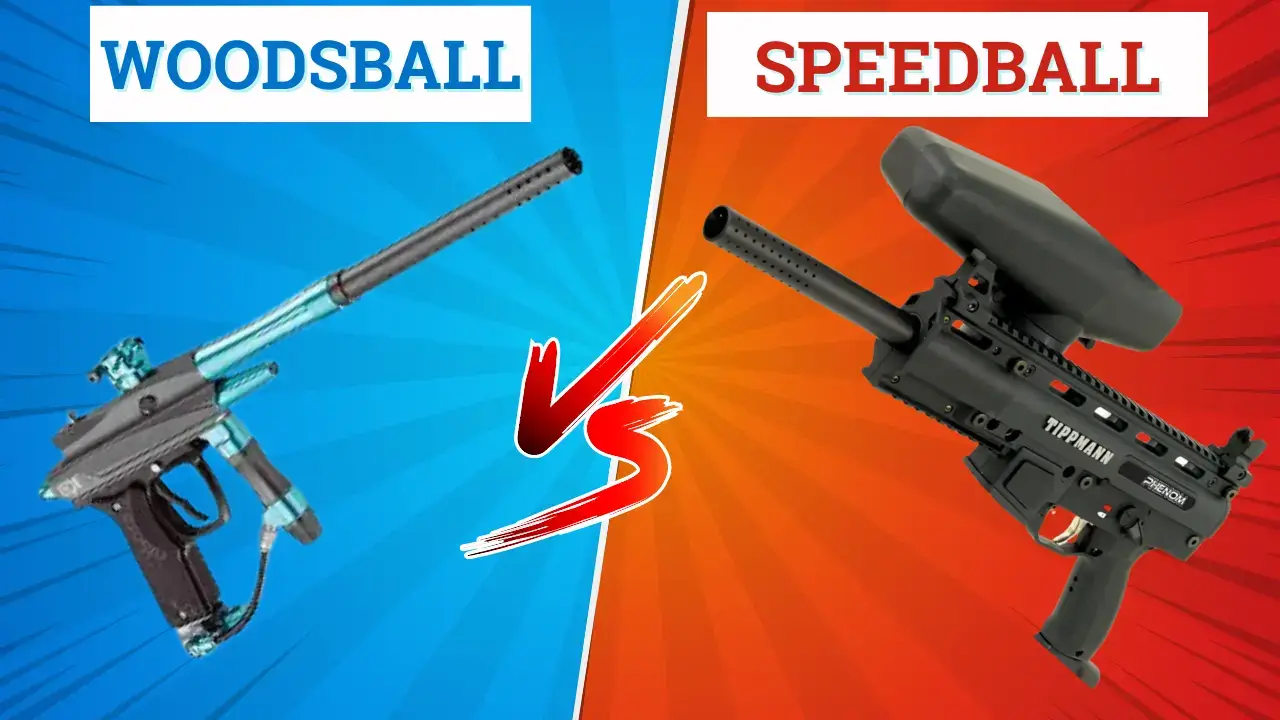Paintball is an exciting and amazing sport that has gained popularity around the world. With its roots dating back to the 1980s, paintball has evolved into different styles, providing players with unique experiences.
Two of the most popular styles are Woodsball and Speedball.
In this article, we will delve into the characteristics, advantages, disadvantages, equipment, gameplay strategies, and player experiences of both styles to help you decide which paintball style suits you best.
- Introduction to Paintball and the Different Styles:
- Overview of Woodsball vs Speedball as Paintball Styles:
- Understanding Woodsball:
- Advantages and Disadvantages of Woodsball:
- Understanding Speedball:
- Advantages and Disadvantages of Speedball:
- Key Differences between Woodsball and Speedball:
- Factors to Consider When Choosing a Paintball Style:
- Case Studies and Player Experiences:
- Conclusion:
Introduction to Paintball and the Different Styles:
Definition and History of Paintball:

Paintball is a competitive sport where players eliminate opponents by shooting them with paint-filled pellets using air-powered guns called markers. It originated as a way for foresters to mark trees and livestock. In the 1980s, paintball was transformed into an action-packed recreational activity and eventually grew into a competitive sport.
Overview of Woodsball vs Speedball as Paintball Styles:
Woodsball and Speedball are two distinct styles of paintball, each offering a unique experience.
- Woodsball is characterized by its immersive and realistic gameplay in natural outdoor environments, resembling military scenarios.
- On the other hand, Speedball takes place on smaller, symmetrical fields with inflatable bunkers, emphasizing fast-paced action and teamwork.
Understanding Woodsball:
Definition and Characteristics of Woodsball:

Woodsball is the paintball style that closely replicates military engagements or survival games in a natural or wooded setting. It offers players a captivating experience by incorporating elements of stealth, tactical maneuvering, and strategic gameplay.
Equipment Used in Woodsball:
In Woodsball, players typically use markers that resemble actual firearms for added realism. Other essential equipment includes camouflage clothing, protective gear such as masks and vests, and accessories like pods and harnesses to carry extra paintballs and air containers.
Playing Field and Terrain in Woodsball:
Woodsball is predominantly played in outdoor environments, such as forests, fields, or hilly areas, providing a diverse and challenging landscape. Natural obstacles, such as trees, rocks, and shrubs, serve as cover and strategic positions for players.
Gameplay Strategies in Woodsball:
Strategies in Woodsball revolve around health, communication, and situational awareness. Teams often employ tactics like flanking and suppressive fire to gain an advantage over opponents. Coordination and effective communication between teammates is crucial for success.
Advantages and Disadvantages of Woodsball:
Benefits of Playing Woodsball:
- Tactical Elements in Gameplay: Woodsball offers a highly strategic experience, requiring players to think critically, plan their moves, and adapt to changing situations.
- Immersion in Realistic Scenarios: The natural and realistic setting of Woodsball allows players to immerse themselves fully in the game, simulating thrilling military engagements.
- Physical Fitness and Outdoor Experience: Playing Woodsball involves navigating challenging terrains, which not only enhances physical fitness but also provides the opportunity to explore and appreciate nature.
Drawbacks of Playing Woodsball:
- Potentially Higher Risk of Injuries: Due to its realistic gameplay and outdoor setting, Woodsball may involve encounters with uneven terrain and natural obstacles, which can increase the risk of injuries compared to Speedball.
- Require Larger Spaces for Gameplay: Woodsball fields typically require larger areas to accommodate the natural environment, which may limit the availability of suitable playing fields in some locations.
- Costlier Equipment and Maintenance: The realistic gear, markers, and accessories used in Woodsball tend to be more expensive compared to those used in Speedball. Additionally, the natural environment can put additional wear and tear on equipment, necessitating more maintenance.
Understanding Speedball:
Definition and Characteristics of Speedball:

Speedball is a fast-paced and highly energetic style of paintball played on smaller fields specifically designed for this purpose. It emphasizes quick reflexes, teamwork, and efficient communication to outmaneuver opponents.
Equipment Used in Speedball:
In Speedball, players use markers designed for rapid and accurate shooting. The gear used mainly consists of lightweight clothing, protective masks, and specialized pod packs to carry extra paintballs conveniently.
Layout and Design of Speedball Fields:
Speedball fields are usually symmetrical and smaller in size compared to Woodsball fields. They consist of inflatable bunkers placed strategically to create obstacles and cover for players. The layouts are often changed to offer new challenges and keep the gameplay dynamic.
Gameplay Strategies in Speedball:
Speedball strategies revolve around quick movements, snap shooting, and effective communication between teammates. Teams focus on capturing the center field and maintaining offensive or defensive positions to control the flow of the game.
Advantages and Disadvantages of Speedball:
Benefits of Playing Speedball:
- Fast-paced: Speedball offers high-intensity action and intense moments that keep players engaged and their adrenaline pumping throughout the game.
- Teamwork and Communication Skills Development: Speedball heavily relies on teamwork, effective communication, and coordination to outmaneuver opponents and achieve victory, enhancing players’ teamwork and communication skills.
- Availability of Organized Tournaments and Leagues: Speedball offers the opportunity to participate in organized tournaments and leagues, allowing players to showcase their skills on a competitive level.
Drawbacks of Playing Speedball:
- Limited Immersion and Realism: Unlike Woodsball, Speedball lacks immersion in realistic scenarios due to its artificial playing environments and focus on fast-paced action.
- Higher Cost of Participation in Tournaments: Participating in Speedball tournaments often requires additional expenses, such as entry fees, travel costs, and accommodation, making it a more expensive endeavor compared to casual Woodsball games.
- Less Focus on Strategy and Tactics: While Speedball does involve a strategy to some extent, it tends to prioritize quick reflexes, agility, and teamwork over deeper tactical planning seen in Woodsball.
Key Differences between Woodsball and Speedball:
Playstyle Variations in Terms of Pacing and Intensity:
Woodsball provides a slower, more methodical gameplay experience that emphasizes strategy and patience. In contrast, Speedball is fast-paced, with constant movement and quick decision-making, requiring players to react swiftly under pressure.
Equipment Variations and Required Skills:
Woodsball gear typically resembles military equipment, with markers designed for accuracy and realism. Speedball equipment focuses on lightweight, rapid-fire markers and gear optimized for agility and quick movements.
The skills required in Woodsball revolve around health, situational awareness, and marksmanship, while Speedball demands agility, speed, and effective communication.
Gameplay Strategies and Tactical Approaches:
Woodsball strategies often involve flanking and long-range engagements, requiring teams to maintain effective communication and employ intricate tactics. Speedball concentrates on aggressive teamwork, rapid movements, and coordinated assaults to gain control of the field swiftly.
Team Dynamics and Communication Requirements:
In Woodsball, due to its strategic nature, teams typically have designated roles and rely heavily on communication and coordination to execute their plans successfully.
In Speedball, the emphasis on rapid decision-making and teamwork demands constant communication, with players needing to adapt quickly to changing situations on the field.
Factors to Consider When Choosing a Paintball Style:
Personal Preferences, Goals, and Motivations:
Consider what aspects of paintball excite you the most and align with your preferences. If you enjoy the immersion in realistic scenarios and tactical planning, Woodsball is likely the better choice. If you prefer fast-paced action, teamwork, and intense competition, Speedball may be more suitable.
Skill Level and Experience in Paintball
Consider your level of experience and skill in paintball. Woodsball is generally considered more forgiving for beginners due to its slower pace and focus on strategy. Speedball, on the other hand, challenges players with its fast-paced nature and demands more developed skills.
Availability of Suitable Playing Fields and Resources:
Evaluate the availability of suitable playing fields in your area. Woodsball can be played in various natural settings, but access to adequate areas may be limited in some regions. Speedball fields may be more easily accessible, especially in urban areas or paintball facilities.
Budget Considerations for Equipment and Participation:
Consider your budget for equipment and participation. Woodsball gear tends to be costly due to the realistic equipment requirements, whereas Speedball may be more accessible in terms of equipment cost.
Additionally, participating in Speedball tournaments may involve additional expenses compared to casual Woodsball games.
Case Studies and Player Experiences:
Interviews with Experienced Woodsball Players
To gain insights into Woodsball experiences, we spoke with seasoned Woodsball players who shared their perspectives on immersive gameplay, tactical maneuvers, and the thrill of simulating military scenarios.
Interviews with Dedicated Speedball Players
We also had the opportunity to speak with dedicated Speedball players who highlighted the adrenaline-fueled action, the importance of teamwork, and the thrill of competitive tournaments in Speedball.
Comparisons of Experiences and Perspectives:
Comparisons between the experiences and perspectives of Woodsball and Speedball players shed light on the unique aspects and individual charms of both styles, allowing players to make informed decisions.
Adjustments in Equipment and Gear:
When transitioning from Woodsball to Speedball, consider investing in lightweight gear, such as marker upgrades for faster shooting and efficient pod packs. For those moving from Speedball to Woodsball, acquiring realistic markers and camouflage clothing can enhance the overall experience.
Adaptation in Playing Style and Strategies:
Transitioning between the two styles requires a shift in playing style. Woodsball players transitioning to Speedball may need to focus on quick reflexes, accuracy, and constant communication.
Speedball players moving to Woodsball should adapt to slower gameplay, strategic planning, and improved stealth.
Insights from Players Who Successfully Transitioned:
We gathered insights from players who successfully transitioned between Woodsball and Speedball, highlighting the challenges they faced, the adjustments they made, and the benefits they gained by experiencing both styles.
Conclusion:
Paintball is an enjoyable and dynamic sport offering two distinct styles: Woodsball and Speedball.
Woodsball provides an immersive and tactical experience in realistic outdoor settings while Speedball offers fast-paced adrenaline rushes and intense competition. Ultimately, the right paintball style for you depends on your personal preferences, goals, and motivations.
Consider the key differences, your skill level, the available resources, and your budget when making your decision. Don’t hesitate to try both styles for a well-rounded paintball experience.
Frequently Asked Questions (FAQs):
What is the Best Style for Beginners?
Woodsball is often recommended for beginners due to its slower pace, focus on strategy, and forgiving nature.
Is Speedball Only for Professional Players?
Speedball can be enjoyed by players of all skill levels. While professional players thrive in organized tournaments, recreational Speedball games with friends can be just as thrilling.
Do I Need Different Markers for Woodsball and Speedball?
While it’s not mandatory, having markers optimized for each style can enhance your experience. Woodsball markers often resemble real firearms for added realism, while Speedball markers prioritize rapid fire and accuracy.
How Much Does Equipment Cost for Each Style?
Woodsball equipment tends to be costlier due to the realistic gear requirements, but there are options available for different budget ranges. Speedball gear can be relatively more affordable.
Can I Play Both Woodsball and Speedball on the Same Day?
Many paintball facilities offer both Woodsball and Speedball fields, allowing players to switch between the two styles during the same visit, providing a diverse and thrilling paintball experience.



